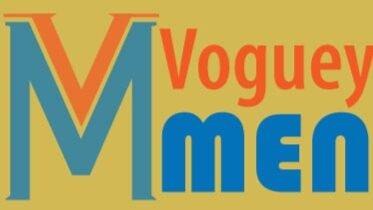The 1990s was a turning point in men’s fashion—a thrilling era where style dared to be louder, looser, and unmistakably individual. The decade reimagined old silhouettes while fearlessly embracing the new: from the swagger of hip-hop streetwear and the nonchalance of grunge, to the revival of preppy polish and unabashedly bold red carpet looks. And even without Instagram or fashion blogs, these 25 Fashion Icons of the 90s made their mark—through music videos, movie premieres, MTV, or simply walking into a room. They didn’t just wear clothes; they started conversations. Some are still redefining style today, while others remain eternal icons. Let’s rewind to the fabulously expressive ’90s and salute the sartorial kings.
Kurt Cobain – The Grunge Icon in Flannel and Torn Denim.

Born in 1967, Kurt Cobain fronted Nirvana and ignited a musical and cultural revolution with Nevermind (1991). His reluctant rock god status translated into a fashion legacy of thrift-store flannels, beat-up cardigans, unwashed jeans, and undone hair—an anti-style that became the style. He didn’t just wear clothes; he made a generational statement through them. Cobain’s look defined the ‘too cool to care’ ethos of 90s youth and continues to influence modern streetwear, designer runways, and anyone who’s ever worn layers like a rebellion.
Andre 3000 – The Funkadelic Fashion Futurist
Born in 1975, André Benjamin of Outkast redefined Southern hip-hop with his musical genius (ATLiens, Aquemini) and psychedelic style. While his lyrics were sharp, his wardrobe was sharper—velvet suits, kilts, bowties, straw hats, neon prints, and cowboy boots were just Monday. He made every sidewalk his personal runway, embodying fearless, genre-bending creativity. In an era of oversized everything, Andre chose tailored flamboyance. His influence echoes in modern maximalism, from Tyler The Creator to Gucci’s gender-fluid campaigns. Style isn’t just what he wore—it’s how he wore imagination.
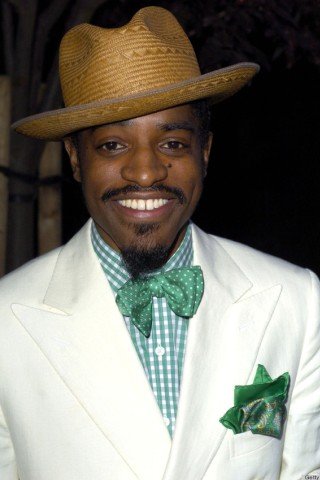
Brad Pitt – The Undone Heartthrob with Unshakable Cool
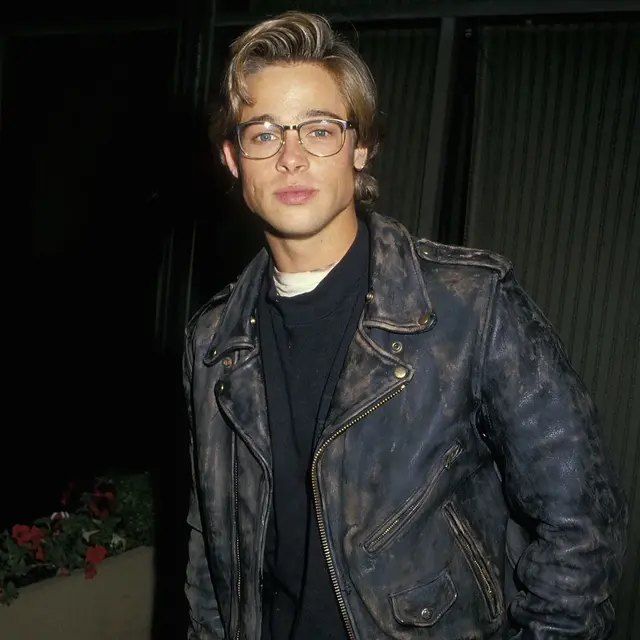
Born in 1963, Brad Pitt broke out with Thelma & Louise (1991) and cemented icon status with Fight Club and Se7en. He embodied rugged beauty with a devil-may-care fashion edge—white tanks, leather jackets, Hawaiian shirts, and that messy blonde hair. Pitt never overdressed, yet always looked cinematic. He mastered the 90s aesthetic of effortless masculinity, riding the line between pretty and gritty. From red carpets to back-alley brawls, he was both leading man and style rebel. His legacy? Making every man believe cool could be casual. image source
Will Smith – The Fresh Prince of Fashion Flair
Born in 1968, Will Smith lit up TV and music as The Fresh Prince of Bel-Air, before conquering Hollywood with hits like Independence Day and Men in Black. On-screen and off, his wardrobe was a kaleidoscope of 90s color: inside-out blazers, graphic prints, neon overalls, and flat-top fades. He made goofy cool, and cool unmistakably his. Will’s style captured the decade’s playful optimism and made space for Black youth expression in mainstream fashion. Today, his early looks inspire retro revivals and TikTok homages alike. image source
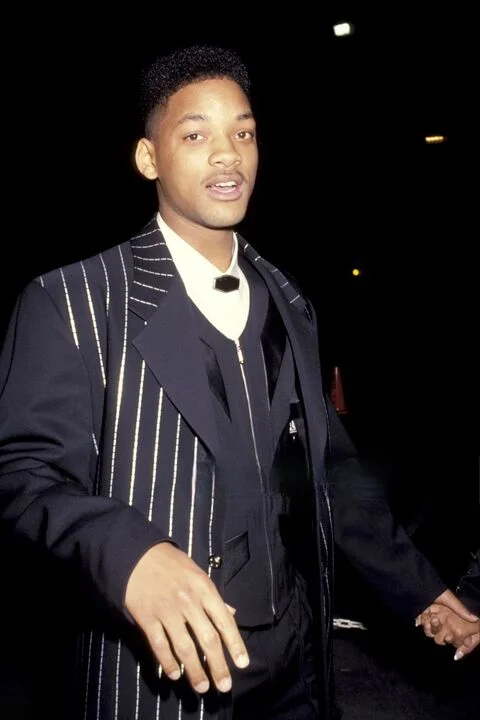
Leonardo DiCaprio – The Poster Boy of 90s Elegance and Youthful Cool
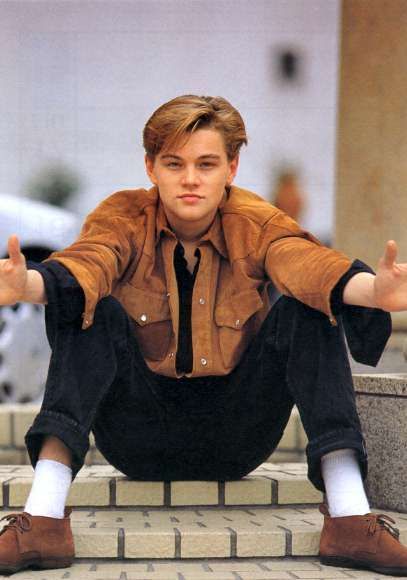
By the mid-90s, Leonardo DiCaprio (born 1974) had become the face that launched a thousand magazine covers. With Romeo + Juliet and Titanic, he didn’t just win hearts—he defined an aesthetic. His angelic features, tousled hair, and lean silhouettes ushered in the “skinny heartthrob” era. Leo’s style mixed vintage ease with youthful suiting, often pairing loose shirts and leather jackets with an aloof charm. He brought back soft masculinity with global impact. Even today, fashion still echoes that Leo look—delicate yet dangerous.
Bret Michaels – The Seductive Subverter Who Made Headbands Sexy
Bret Michaels, frontman of Poison, carried the wild spirit of glam rock into the 1990s with a flamboyance that couldn’t be ignored. His signature headbands became legendary, transforming into symbols of rock swagger, while his ripped, super distressed jeans set the gold standard for fearless male confidence. Pairing leather, chains, concho studded hats and bold prints with unapologetic charisma, Bret embodied a style both rebellious and seductive. More than a musician, he was a walking poster boy for glam rock bravado—his look still inspiring daring spirits today.
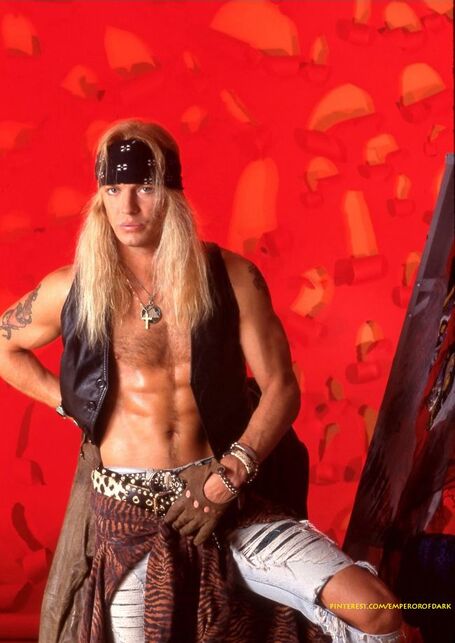
Pierce Brosnan – The Gentleman Spy with Real-World Suave
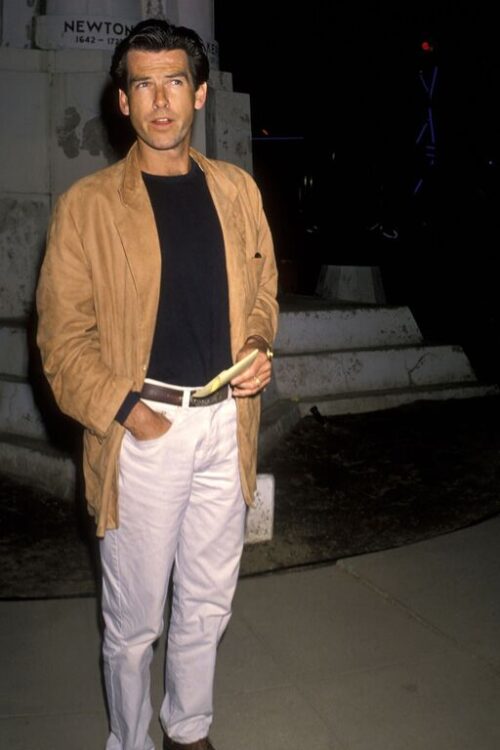
Taking over the James Bond mantle in 1995, Irish actor Pierce Brosnan (born 1953) brought a slick modernity to espionage style. Off-screen, he matched Bond’s polish with effortless grace—double-breasted suits, open collars, and perfectly combed salt-and-pepper hair. Brosnan’s 90s fashion was dignified without being stiff, exuding a kind of accessible aristocracy. He helped revive interest in tailored elegance during a decade better known for rebellion. His Bond made martinis—and pocket squares—cool again, laying the foundation for the modern “dapper dad” aesthetic. Image Source
Tupac Shakur – The Revolutionary in a Bandana
Born in 1971, Tupac wasn’t just a rap icon—he was a poet, actor, activist, and provocateur who defined West Coast hip-hop with albums like All Eyez on Me. His fashion was militant, magnetic, and unapologetically Black: bandanas tied front, sagging jeans, gold chains, and Timberlands. His body was often a canvas—tattoos, bare chests, bullet scars, and defiant pride. Tupac’s style became visual shorthand for resistance, street swagger, and soul. Today, his iconic looks still permeate fashion editorials, tribute collections, and every tied bandana with an attitude.
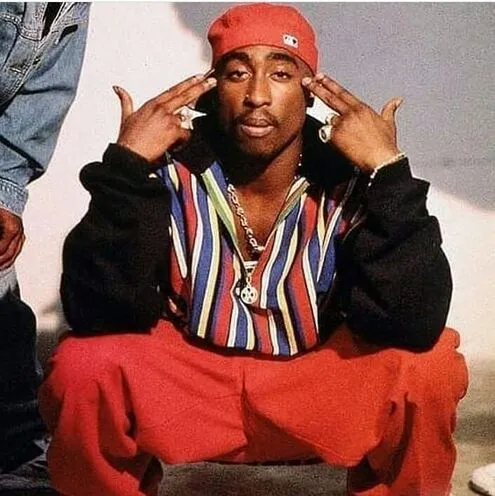
Lenny Kravitz – The Rock Bohemian with Endless Swagger
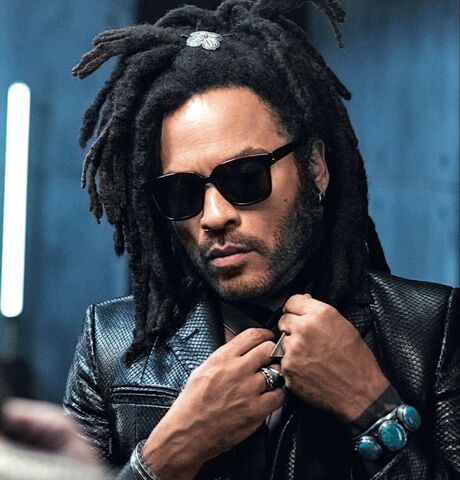
Few embodied sex appeal and fearless flair like Lenny Kravitz, born in 1964. With albums like Are You Gonna Go My Way, he fused classic rock, funk, and soul, and his fashion followed suit—fur coats, mesh tops, leather pants, and vintage jewelry layered like armor. He mixed 70s rock god energy with 90s cool, radiating nonchalance whether on stage or in front rows. Kravitz turned maximalism into masculinity, opening the door for modern fashion risk-takers. Even now, no one wears shades and a scarf like Lenny.
Keanu Reeves – The Accidental Style Icon of Anti-Fashion Cool
Keanu Reeves (born 1964) never chased fashion—it found him. With Speed, The Matrix, and his soulful off-screen presence, he became the ultimate 90s outsider: brooding, humble, and unbothered. His style? A minimalist mix of beat-up boots, oversized blazers, worn denim, and long, disheveled hair. He looked like a man who lived in secondhand stores and still made it cinematic. Keanu’s appeal lay in authenticity, and his “don’t try too hard” fashion became its own blueprint. Today’s normcore and indie minimalism owe him more than they’ll admit.
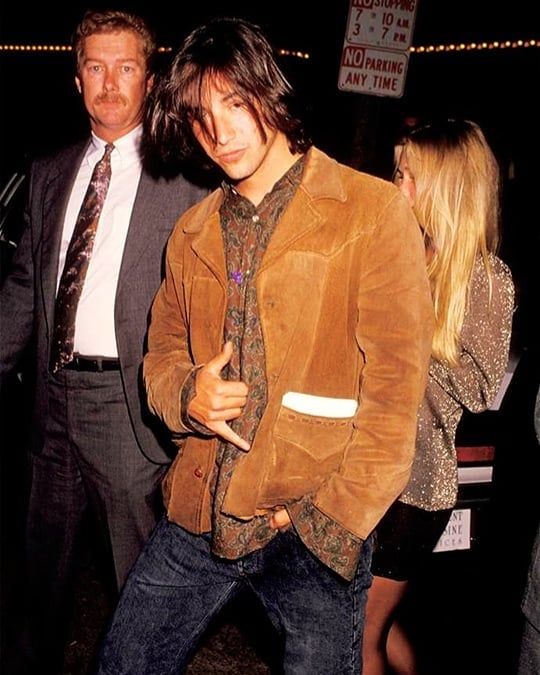
LL Cool J – The Godfather of Hip-Hop Cool and Kangol Swagger
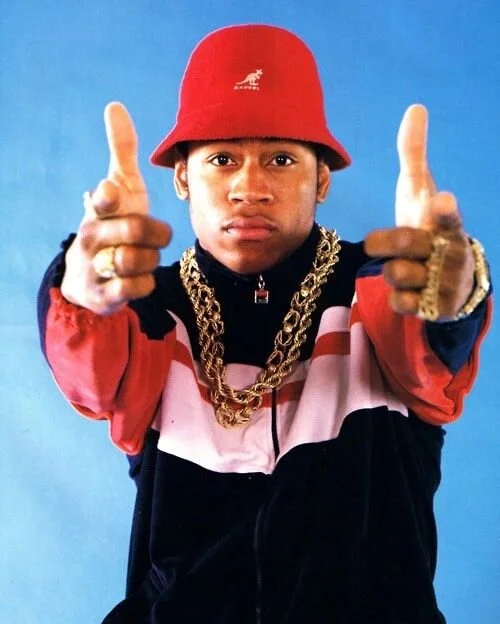
James Todd Smith, aka LL Cool J (born 1968), dominated both music charts and streetwear trends through the 90s. He pioneered the rapper-as-style-icon era, long before fashion houses courted hip-hop. Known for his Kangol hats, gold chains, track suits, and muscle-hugging tees, LL embodied hip-hop confidence with clean, athletic edge. He made being bold look polished, and masculine fashion suddenly found rhythm in swagger. Today’s athletic-luxury hybrids, from Off-White to Supreme collabs, carry echoes of LL’s original mix of muscle, music, and marketability. Image source
Dennis Rodman – The Mad Prince of 90s Fashion Rebellion
Basketball was just Dennis Rodman’s day job. Born in 1961, the NBA superstar redefined what men—especially athletes—could wear. Neon hair, lip rings, wedding dresses, sheer tops, and feather boas: Rodman turned the court and red carpet into stages of shock and genius. His fashion was performance art, blurring gender rules long before it was trending. While some saw chaos, fashion saw courage. Today’s unapologetic self-expression in men’s fashion—from Lil Nas X to fashion week gender-fluidity—owes a deep debt to the Worm’s audacity. Image Source

Enrique Iglesias – Latin Cool with Casual Swagger
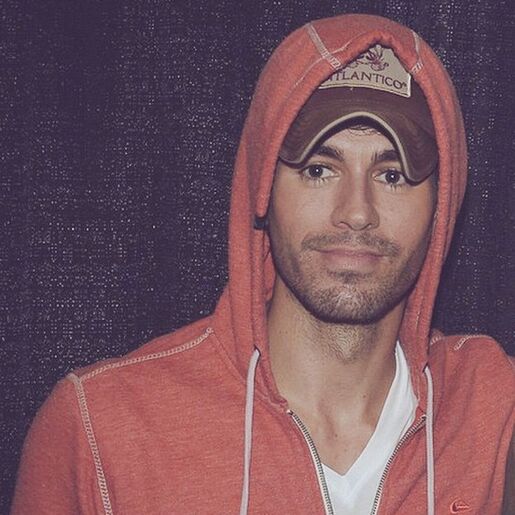
Born in 1975, Enrique Iglesias became a defining male style figure of the 1990s with his blend of pop superstardom and approachable charm. His look was simple yet magnetic: slim denim, half-open shirts, leather jackets, and that ever-present ball cap tilted with effortless swagger. Enrique’s style resonated globally because it felt wearable — fans could copy his casual cool without losing the romance. As his ballads topped charts worldwide, his fashion reinforced the image of the modern heartthrob: relaxed, confident, and universally appealing.
George Clooney – The Silver Fox Who Made Suits Smoulder
While others chased edge, George Clooney (born 1961, and not a Silver Fox yet back in the 90s) played it classic—and made it magnetic. As ER’s Dr. Doug Ross and Hollywood’s leading man, Clooney brought back old-school charm in the era of rebellion. Always immaculate in tailored suits, dark shirts, and no-fuss grooming, he redefined mature masculinity for the decade. No flash, no gimmicks—just grace, gravitas, and a perfectly cut jacket. His 90s fashion legacy lies in making simplicity aspirational, a lesson still alive in today’s timeless menswear staples. Image Source
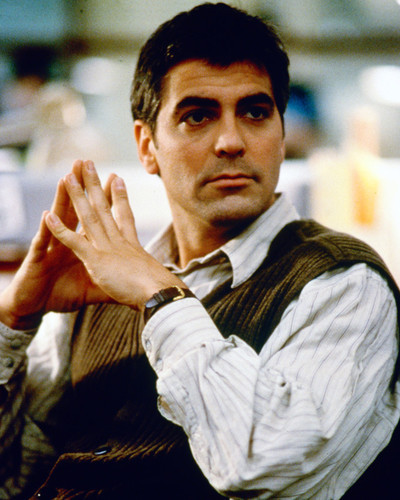
Denzel Washington – The Quiet Storm of Sophisticated Cool
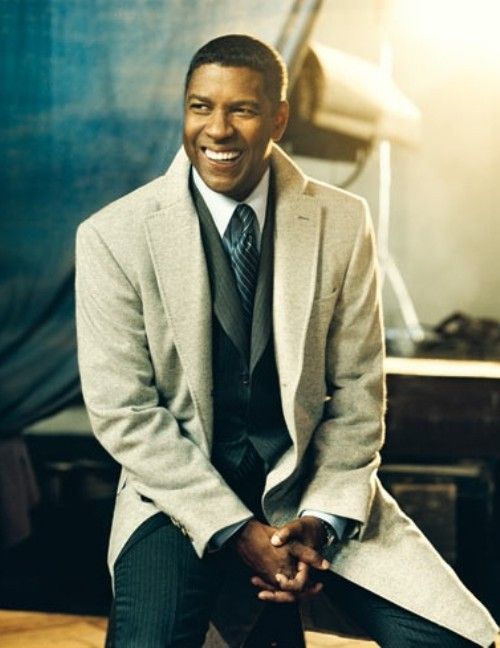
Few men wore confidence like Denzel Washington (born 1954). With films like Malcolm X, The Pelican Brief, and The Hurricane, he embodied intellect and intensity—qualities that spilled into his elegant wardrobe. Denzel’s fashion leaned toward precision: double-breasted suits, dark earth tones, and subtle accessories. He didn’t shout style; he mastered it. Always composed, always regal, he inspired a generation of men—especially Black men—to embrace refinement without losing edge. Today’s return to clean, dignified tailoring owes much to Denzel’s understated sartorial authority. Pinterest
River Phoenix – The Lost Angel of Indie Fashion
River Phoenix (1970–1993) was more than a prodigy—he was a mood. Ethereal, bohemian, and politically aware, his fashion was a mirror to his soul: thrifted shirts, old jeans, oversized knits, and lived-in boots. Films like My Own Private Idaho turned him into a Gen X icon, but it was his off-screen sensitivity and indie romanticism that made his style so haunting. River made vintage feel personal and activism feel stylish. Today’s sustainable fashion wave and nostalgic thrift culture echo his quiet, timeless rebellion. Image Source: vintag
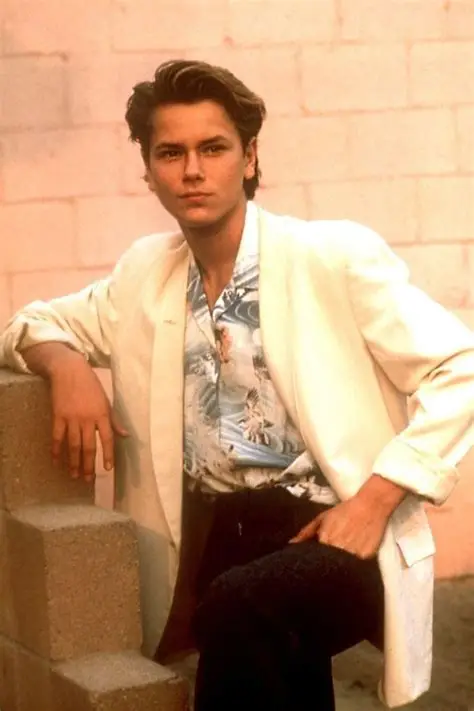
Axl Rose – The Rock God of Leather, Lace, and Attitude

Axl Rose (born 1962), frontman of Guns N’ Roses, was a walking firestorm of 90s rock excess. Bandanas, ripped jeans, leather pants, cowboy boots, and bare-chested bravado—his look was pure outlaw fantasy. He mashed up glam metal, biker grit, and Sunset Strip sleaze into a fashion identity that couldn’t be ignored. Axl didn’t just sing rebellion—he wore it. His high-octane presence inspired a legion of copycats and left behind a lookbook of glorious chaos. Grunge may have dulled the gloss, but Axl’s fashion rage never faded.
Ricky Martin – The Latin Heartthrob Who Brought Heat to Pop Fashion
With Livin’ la Vida Loca, Ricky Martin (born 1971) exploded onto global stages, delivering not just beats but bold style. Shiny shirts, open collars, tight leather pants, statement sunglasses—he was the 90s poster boy for Latin flair and pop sex appeal. Ricky’s fashion was about rhythm, movement, and confidence. He showed that men could be flamboyant and masculine, sensual and stylish, all at once. His influence is seen today in the global embrace of vibrant menswear—from Bad Bunny to Maluma, his fashion spirit lives on. Image Source
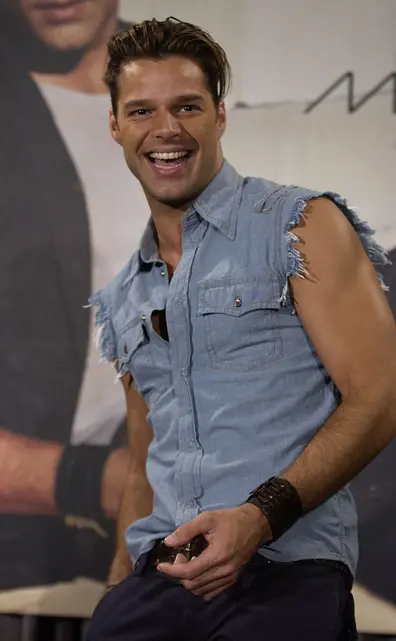
Jamiroquai (Jay Kay) – The Funky Futurist in Flares and Fuzz
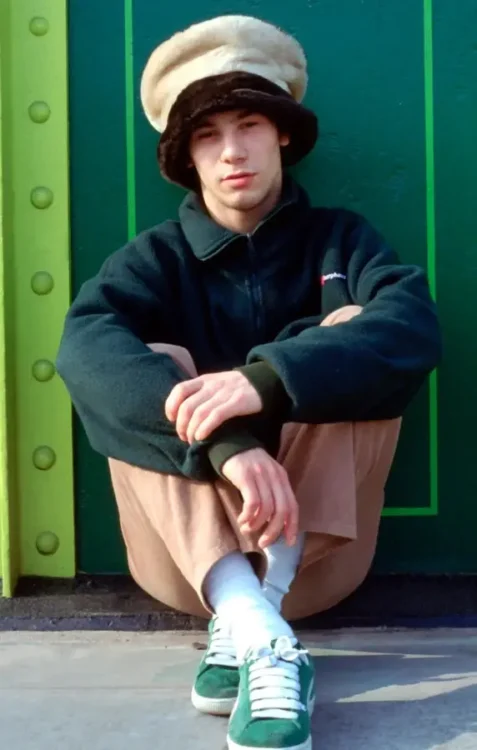
Jay Kay (born 1969), frontman of Jamiroquai, brought acid jazz and intergalactic funk to the 90s—and dressed the part. His wardrobe mixed vintage Adidas, oversized jackets, retro flared pants, and those iconic incredulously funky furry hats. Jay Kay looked like a time-traveler from the disco-future, blending 70s groove with 90s rave energy. While his music soared, so did his style: playful, flamboyant, and full of movement. He made tracksuits cool before luxury brands caught on, and his fashion DNA runs through today’s maximalist revival and vintage streetwear obsessions.
Leslie Cheung – The Androgynous Visionary of Cantonese Cool
A megastar across Asia, Leslie Cheung (1956–2003) transcended categories—actor, singer, style icon. From Farewell My Concubine to his gender-fluid stage costumes, Leslie used fashion to challenge norms with poetic boldness. He wore sheer blouses, dramatic tailoring, silk robes, and sharp suits, embracing both masculine and feminine aesthetics with grace. In a time when conformity ruled, Leslie was dazzlingly brave. His trailblazing looks paved the way for a more expressive, inclusive vision of men’s fashion, especially within queer and East Asian style cultures today. Image Source
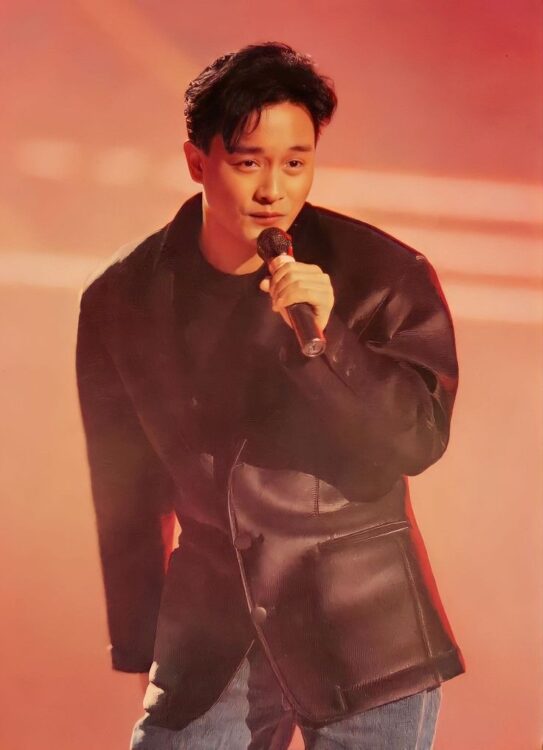
Aaron Kwok – The Cantopop Dancer in Mirror Shades and Metallics
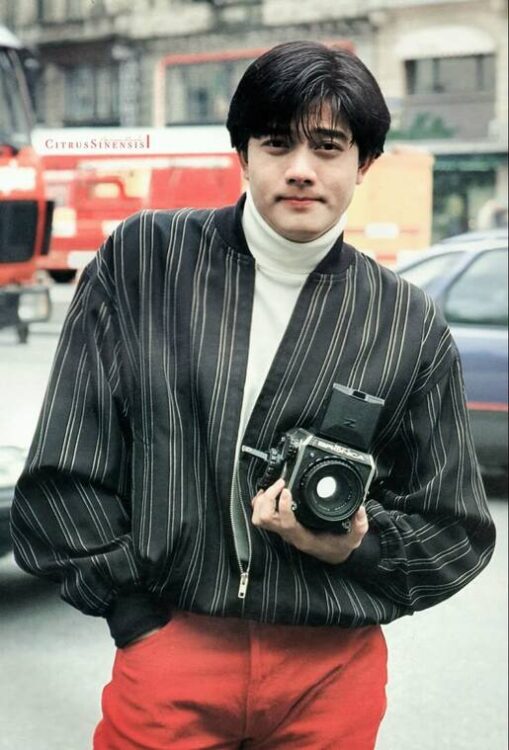
Aaron Kwok (born 1965) wasn’t just a singer and dancer—he was a full-blown fashion phenomenon in 1990s Hong Kong. Often clad in shiny jackets, sleeveless vests, racing gear, and futuristic eyewear, he turned every stage into a runway. With slicked-back hair and breakneck moves, his image married pop glamour with high-energy streetwear long before it was mainstream. Aaron helped turn Asian pop stars into fashion authorities, a legacy now seen in K-pop and beyond. His mix of flash and form continues to inspire new waves of performance style.
Aamir Khan – 90s India’s Fashion Risk-Taker and Heartthrob
Born in 1965, Aamir Khan wasn’t just Bollywood’s thinking actor with a husky voice and method intensity—he was the decade’s unexpected style firebrand. In the 1990s, he dared to go where few leading men ventured, turning accessories into statements. From pendants that gleamed under the lights, to pants chains, flamboyant printed ties, tinted shades, jaunty hats, headbands, Aamir mastered the art of detail. His fearless mix of bling and charm gave young India a new language of cool—none more iconic than his playful waistcoat-and-chain looks in Jo Jeeta Wohi Sikandar, which still echo in retro style circles today.
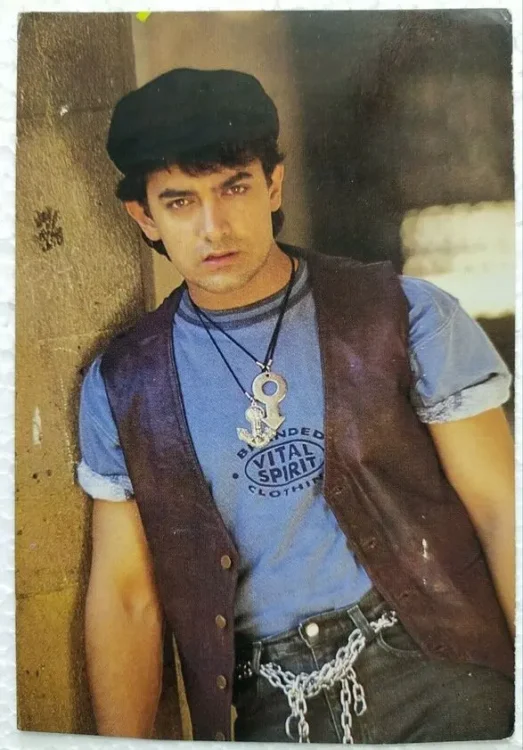
Soman Milind – The Indian Supermodel Who Redefined Masculinity
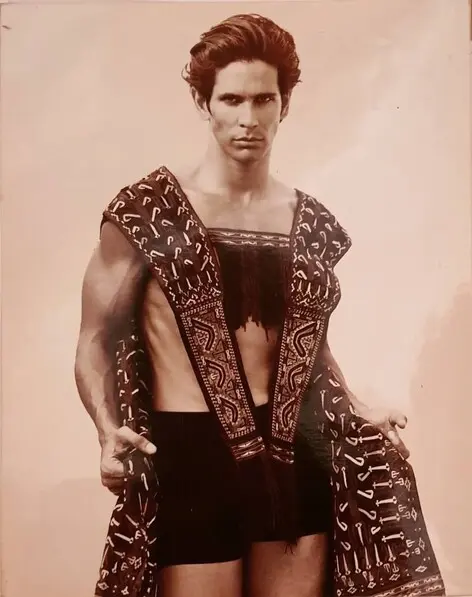
Before India’s fashion industry truly boomed, Soman Usha Milind (born 1965) blazed the trail as the country’s first male supermodel. With his chiseled physique, long hair, and smoldering presence, he ruled Indian runways and ad campaigns—particularly that unforgettable “Made in India” music video. Soman brought a new sensuality and athleticism to Indian men’s fashion, unafraid to go shirtless or play with ethnic fusion wear. His bold, natural aesthetic challenged conservative expectations, and his influence still echoes in the rise of South Asian male models today. Image Source
Cameron Alborzian – The Persian Muse of Global Runways
Cameron Alborzian (born 1967) was the rare male model who became a face—and body—for the world’s top designers. With Persian roots and British upbringing, his striking look made him a favorite of Versace, Jean Paul Gaultier, and Madonna (he starred in her “Express Yourself” video). In the 90s, Cameron represented a refined masculinity—long hair, sharp cheekbones, sculpted physique—dressed in flowing silk suits, couture streetwear, or bare-chested blazers. Though he later left fashion for holistic healing, his brief reign helped redefine the global supermodel ideal for men.
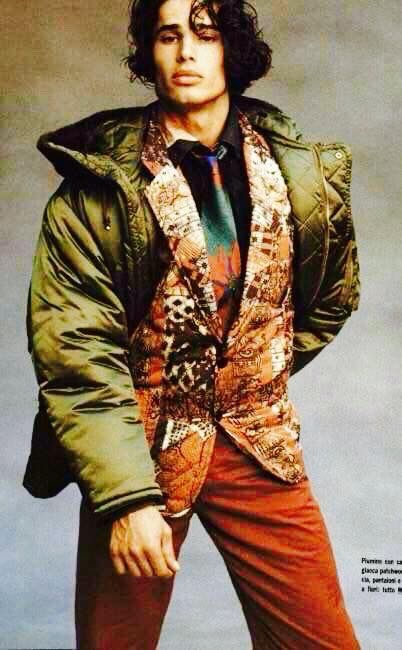
Michael Jordan – The Athlete Who Turned Sneakers Into Status Symbols

Born in 1963, Michael Jordan ruled the court and the closet. His rise with the Chicago Bulls and the launch of the Air Jordan 1 in 1985 redefined athletic fashion. Off-court, he paired gold chains with tailored tracksuits and varsity jackets, making sportswear aspirational. His most iconic style moment? The black-and-red Air Jordan 1s—banned by the NBA, worshipped by fans. Jordan made sneakers fashionable, collectible, and powerful. His legacy still dominates streetwear because he merged performance, prestige, and personal style in one seamless package. Image Source
The 1990s gave us a style spectrum as bold as it was diverse—power dressing that sharpened silhouettes, hip-hop looks that redefined street swagger, and grunge that made rebellion fashionable. The 25 men on this list shaped the decade, and captured the fashion zeitgeist of the time, leaving behind blueprints still referenced today. Their influence lingers in wardrobes, on runways, and in pop culture—proof that true style icons never fade, they keep inspiring new waves.
Click here for a sneak peek into the 25 male fashion icons of the 1980s who defined outrageous cool long before the 90s refined it.
